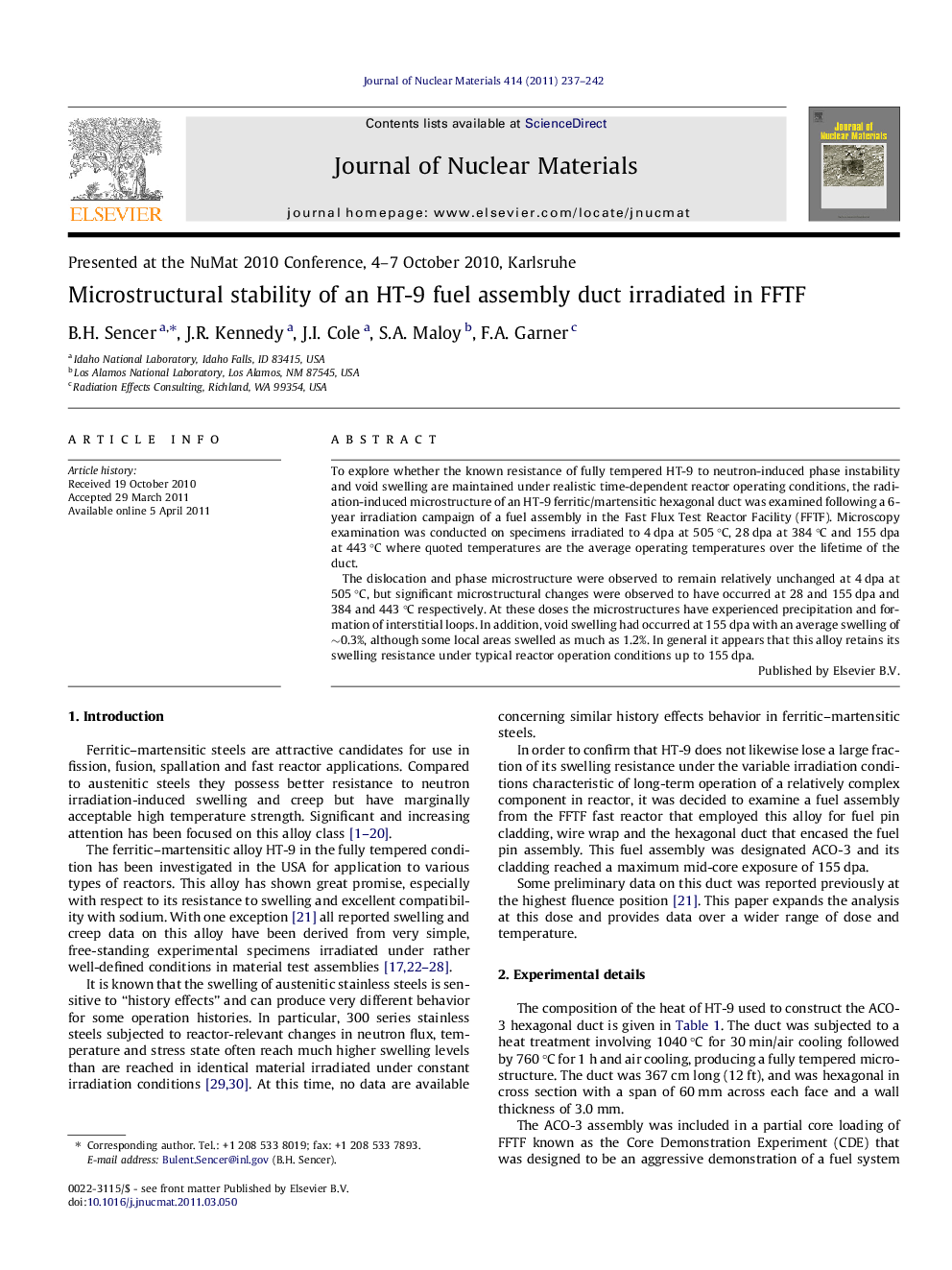| Article ID | Journal | Published Year | Pages | File Type |
|---|---|---|---|---|
| 1566688 | Journal of Nuclear Materials | 2011 | 6 Pages |
To explore whether the known resistance of fully tempered HT-9 to neutron-induced phase instability and void swelling are maintained under realistic time-dependent reactor operating conditions, the radiation-induced microstructure of an HT-9 ferritic/martensitic hexagonal duct was examined following a 6-year irradiation campaign of a fuel assembly in the Fast Flux Test Reactor Facility (FFTF). Microscopy examination was conducted on specimens irradiated to 4 dpa at 505 °C, 28 dpa at 384 °C and 155 dpa at 443 °C where quoted temperatures are the average operating temperatures over the lifetime of the duct.The dislocation and phase microstructure were observed to remain relatively unchanged at 4 dpa at 505 °C, but significant microstructural changes were observed to have occurred at 28 and 155 dpa and 384 and 443 °C respectively. At these doses the microstructures have experienced precipitation and formation of interstitial loops. In addition, void swelling had occurred at 155 dpa with an average swelling of ∼0.3%, although some local areas swelled as much as 1.2%. In general it appears that this alloy retains its swelling resistance under typical reactor operation conditions up to 155 dpa.
